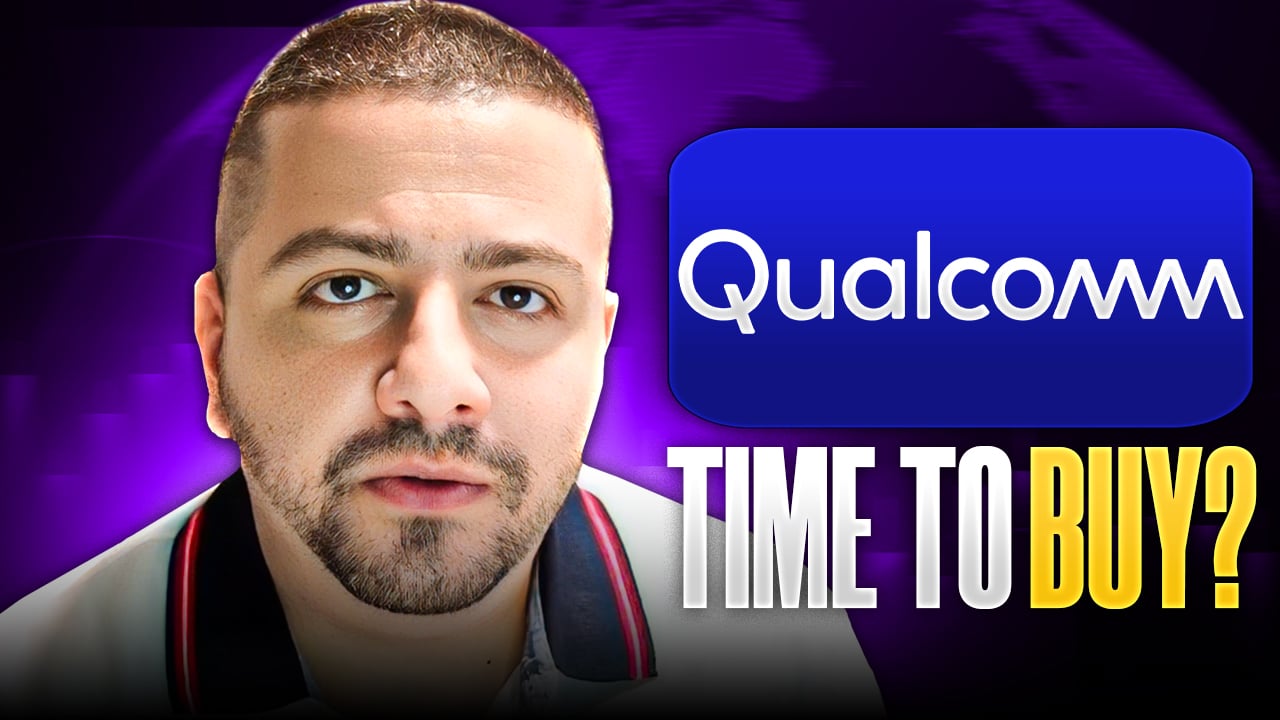Qualcomm (QCOM 4.79%), the world's largest mobile chipmaker, has raised its dividend every year since it started paying one in 2003. Its latest hike in March boosted its payout by 5% and gave it a forward yield of 3.2% -- which is much higher than the S&P 500's 2% yield.
Qualcomm's ability to raise its dividend during the COVID-19 crisis as others cut or suspend their payouts is encouraging. But will that payout remain secure as the pandemic's aftershocks ripple through supply chains and consumer markets?

Image source: Getty Images.
How secure is Qualcomm's dividend?
Qualcomm spent 71% of its earnings per share (EPS) and 40% of its free cash flow (FCF) on its dividend over the past 12 months. Those payout ratios indicate that Qualcomm has plenty of room for future dividend hikes.
Qualcomm spent another 38% of its FCF on buybacks during the same period. Unlike Intel (INTC 3.27%), which recently suspended its buybacks to protect its dividend, Qualcomm will likely continue the $30 billion buyback plan it approved in late 2018 after its bid for NXP Semiconductors (NXPI 1.17%) collapsed.
Qualcomm held $8.4 billion in cash and equivalents and $1.5 billion in marketable securities at the end of the second quarter. It was shouldering $13.4 billion in long-term debt and $2.5 billion in short-term debt -- and both figures remained nearly flat from the beginning of the fiscal year in late September.
Qualcomm has more than enough cash to cover its current maturities, and it clearly prioritizes dividends and buybacks over paying off its long-term debt. During last quarter's conference call, CFO Akash Palkhiwala stated: "In these challenging times, we are glad to have a strong balance sheet, liquidity position, and debt rating."
But how strong is Qualcomm's core business?
Qualcomm struggled with three main headwinds in recent years. First, it lost market share in mobile SoCs (system on chips) to lower-end chipmakers like MediaTek and first-party chips from OEMs like Huawei and Samsung. The saturation of the smartphone market exacerbated that pain.
Second, its licensing business, which generates most of its profits by taking a cut of every smartphone sold worldwide, was besieged by OEMs and government regulators claiming its fees were too high. Rival chipmakers also claimed Qualcomm drove them out of the market by bundling its SoCs with lower licensing fees.
Apple (AAPL +0.33%), one of Qualcomm's top customers, temporarily halted its licensing payments, sued the chipmaker, and pivoted the production of its baseband modems to Intel. Qualcomm eventually reached a settlement with Apple, but Apple bought Intel's modem unit to gradually reduce its dependence on Qualcomm.
Lastly, Qualcomm was entangled in a triangle of failed takeovers. Qualcomm agreed to buy NXP in late 2016, but Broadcom (AVGO +2.10%) launched a hostile bid for Qualcomm in 2017. NXP's shareholders resisted Qualcomm's offer, and Qualcomm was only saved from Broadcom after the Trump administration blocked the deal. Those distractions, along with the barrage of fines and lawsuits, likely spooked the bulls.
What are Qualcomm's expectations for 2020?
Qualcomm's chipmaking and licensing businesses still face many of those headwinds, but an influx of new 5G smartphones should strengthen both segments this year.

Image source: Getty Images.
During last quarter's call, CEO Steve Mollenkopf noted "a few regions" were experiencing "minor delays in 5G network deployments," but that its overall 5G plans were still "progressing as planned."
Mollenkopf noted the chipmaking unit had secured new 5G design wins that generated more revenue than its older designs, and the licensing unit had secured more than 85 5G licensing agreements. He also claimed that a broad transition to cloud-based collaboration and remote device testing mitigated the pandemic's impact on Qualcomm's supply chain.
Qualcomm's revenue rose 5% annually in the first six months of fiscal 2020 as its EPS climbed 17%. For the third quarter, which bears the full impact of the COVID-19 crisis, it expects its revenue to dip 2% at the midpoint (after excluding a big one-time settlement from Apple a year earlier) and for its earnings to drop 13% on a non-GAAP basis.
It attributed the drop to sluggish smartphone sales during the crisis, but also noted that smartphone sales rebounded sharply in China as it eased its lockdown measures, which suggests its chipmaking and licensing revenue could accelerate in the fourth quarter. That's why analysts still expect Qualcomm's revenue and earnings to rise 8% and 6%, respectively, this year.
The bottom line: Qualcomm's a stable stock with a safe dividend
Qualcomm has been battered by headwinds in recent years, but it remains the world's top chipmaker and owner of wireless licenses. Its free cash flow fluctuated due to investments, fines, and settlements, but it's still generating more than enough cash to cover its dividends, buybacks, debt payments, and R&D investments. Qualcomm's stock isn't particularly cheap at 23 times forward earnings, but it's a stable stock with a safe dividend that should easily ride out the near-term turbulence.










